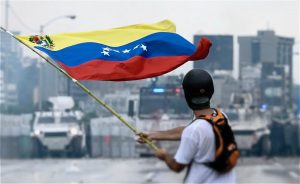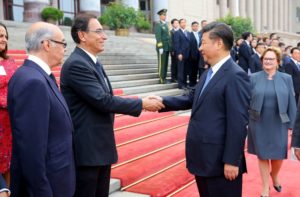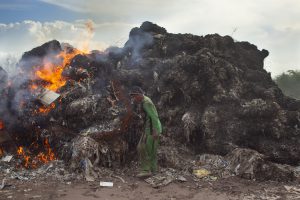At the Guri Dam lies the heart of Venezuela’s electricity system. Built on the Caroní River just before it pours into the mythical Orinoco, it holds a reflective pool with a 4,000 square kilometre surface area that feeds the Simón Bolívar hydroelectric plant, as it is otherwise known, and which is responsible for most of the electricity the country consumes.
Guri is strategically important to Venezuela’s energy sector and economy. Inaugurated in 1974, by 1986 its capacity had increased five-fold and in 2007 its upgraded its machinery.
10,235MW
the installed capacity of Venezuela's Guri dam, one of the world's largest
In theory, it has an installed capacity of 10,235 megawatts in its 20 turbines, capable of generating 45,000 gigawatts of electricity per year. Three lines of 765 kilovolts, 400kv and 230kv, with triple and double redundancy (two sets of backups in the event of failure) supply the entire country, stretching west to east.
There is also an underwater cable for the Caribbean island of Margarita and connections to Boa Vista in Brazil and Cúcuta and La Guajira (Colombia) for the sale of surplus electricity.
The Guri and Macagua hydroelectric plants are supposed to generate half of the 34,000 megawatts installed in the country. Thermoelectric (coal-fired) power provides the rest.
Over a decade ago, the Venezuelan government issued the electrical emergency decree. Ever since, Guri has been at the centre of controversy over the causes behind frequent power outages.
Droughts and disinvestment in Venezuela’s electricity
The Government has blamed falling water levels at Guri on the drought caused by the El Niño phenomenon. Bolívar state, an area ripe with national parks and indigenous communities and is usually presenting the highest rainfall in Venezuela, has been particularly hard hit, it claims.
Yet in 2010, former electricity company managers and experts were already pointing out that corruption, along with the purchase of obsolete equipment and bad management in the award of contracts have been responsible for blackouts that can last days. Between 19 November 2018 and 9 February 2019, blackouts caused 79 deaths in hospitals, according to the organisation Doctors for Life, which publishes the annual National Hospital Survey.
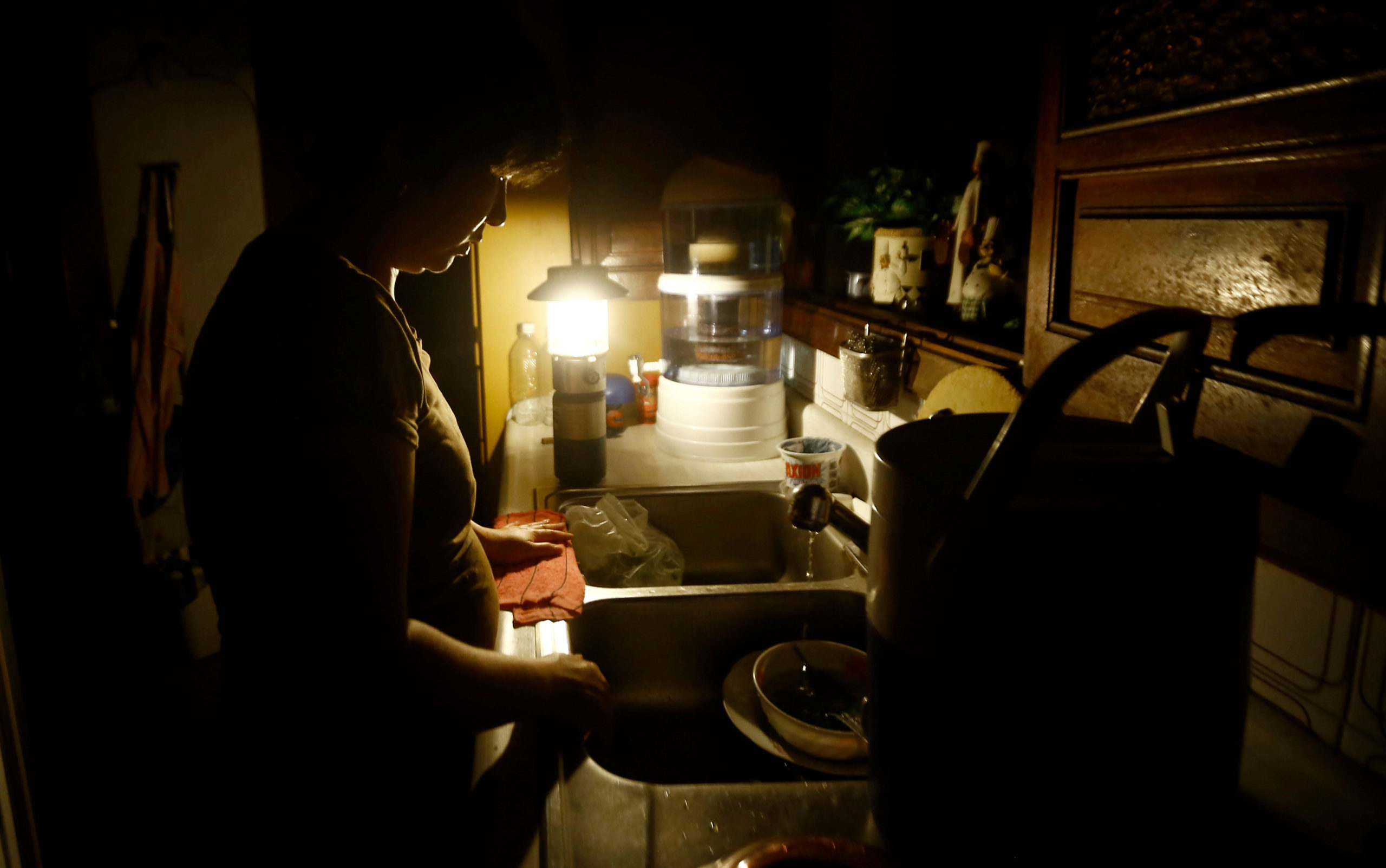
In 2016, the Guri reservoir was so empty that then Minister of Electric Power, General Luis Motta Domínguez, ordered the dredging of the bottom of the lake after he himself conducted an underwater inspection with a team of divers. It was the second time it had reached the official ‘critical’ level since 2003.
Some scientists and environmentalists point to other causes. They say water levels have dipped because of deforestation in hydrological basins as a consequence of alluvial gold and diamond mining by the mafia and guerrillas since 2011, when then President Hugo Chávez nationalised mining concessions.
72 hours
the length of blackouts that hit Venezuela in March 2019
By the time Venezuela was plunged into the 72 hour-long blackout of March 2019, the “electrical emergency” was already nearly a decade old. The decline of other public and private services went from chronic to acute.
It was no longer just the lack of electricity. The population also suffered from an absence of pumped drinking water and a general failure in telecommunications networks. Misinformation caused by media transmission blackouts was widespread as fuel for emergency power plants ran out.
Amid the darkness and with no projected date for the return of electricity, the country was in despair, and experiencing de facto dollarisation – the alignment the national currency with the dollar.
With no possibility of using electronic banking services, and given the insufficiency of the local currency after two years of hyperinflation, all transactions involving candles, bottled water, food or medicine were made exclusively in US dollars.
Only cash was accepted, introducing a new level of inequality between those who receive remittances or cash in foreign currency and those who live in abject poverty because they earn in bolivars.
On 9 March 2019, Nicolás Maduro accused the US of carrying out a “cyber-attack” against the Guri reservoir. However, experts who worked in regional power companies prior to their 2006 nationalisation into a centralised entity called the National Power Corporation (Corpoelec) deny the official version and say that, in truth, corruption shut down the country.
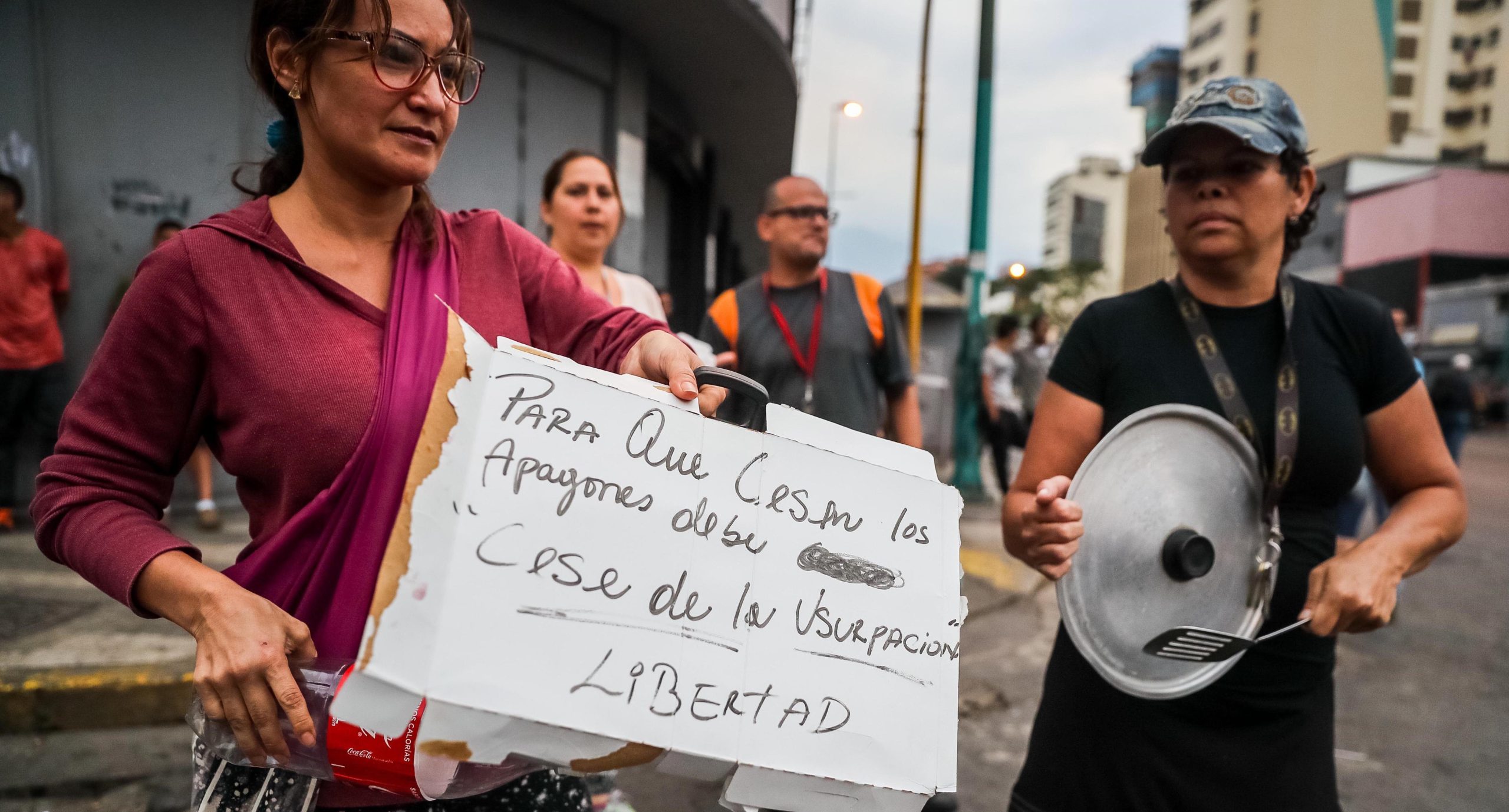
The contracting policy announced by Chávez from 2010 began by handing out projects to close allies, and ended in inflated budgets, the purchase of obsolete equipment, inefficiency and corruption.
The National Assembly calculated that US$26 billion for unfinished power projects or works that never began, corresponding to 16,000 MW, had been embezzled.
This is backed up by a November 2018 report by Transparency International, which studied Venezuela’s electricity projects between 2000 and 2014 and their contractors.
Transparency International analysed 40 power generation projects with a combined installed capacity of 17,513 MW and found surcharges totalling US$14.6 billion dollars.
The organisation concluded that only 4,360.5 MW — less than a quarter of the total — was operational. It also found contracts awarded to just a few companies, such as the nationalised Caracas Power, Argentina’s IMPSA and Venezuela’s Derwick.
Another report by the Comptroller General of the Republic on Derwick documented irregularities in the purchase of obsolete equipment, which had been damaged after being abandoned without being installed or had less capacity than that contracted. However, no administrative responsibilities were determined and the Attorney General’s Office was not instructed to open criminal investigations.
The case of Derwick stands out, with surcharges of US$2.9 million on 11 projects. It was infamously controlled by ‘bolichicos’, young people closely affiliated with the ‘Bolibourgeoisie’, a nickname for the ruling class of Chavistas.
In July 2017, a Miami federal court accused the company of laundering US$1.2 billion from contracts with the Venezuelan state-owned PDVSA. Two months later, a series of reports by Venezuela’s El Pitazo and Spain’s El Confidencial called “the Swiss Connection” detailed leaked million-dollar contracts for electricity projects obtained by Derwick, as it posed as a subsidiary of Russian bank Gazprombank.
A neglected grid
Hydroelectric plants today are responsible for 85% of the 13,000 MW actually available, according to estimates by Winston Cabas, president of the Venezuelan Association of Electrical and Mechanical Engineers (Aviem) of the College of Engineers of Venezuela. In an interview with the BBC after the March 2019 blackout, Cabas condemned the fact that two wind farms that supposedly generate 300 MW of energy do not work. Moreover, he claimed, the thermoelectric network functions precariously.
Cabas’ hypothesis seems corroborated by the progressive drop in electricity supply and demand from 2013 onwards. Demand has outpaced supply since 2007, according to Victor Poleo, former vice minister of Energy. Demand fell to 15,000 MW by 2015, forcing “load management”, a euphemistic name given by Maduro to the schedule of blackouts afflicts different Venezuelan towns daily.
Transmission and distribution lines, as well as some electrical substations, also fail due to explosions caused by internal faults, or forest fires that spread because of insufficient pruning of vegetation in surrounding areas. In March 2019 alone, there were explosions in ten such facilities.
This was the real cause of the first extensive blackout on 7 March of this year, as the Wall Street Journal revealed, citing a report by Carlos Portillo-Quintero, professor of resource management at Texas Tech University. Portillo analysed NASA satellite imagery, finding several fires from 6-8 March around sections of the 2,300-kilometre extra high-voltage 765-kilovolt transmission lines that connect Guri to the rest of the country.
Inflated payrolls, the flight of technical skills and poor management led to an increase in work-related accidents, loss of productivity and non-compliance with maintenance schedules
José Aguilar, engineer and international consultant on electrical matters, explained in a 2018 column that the National Electrical System has a triple redundancy, as it also has transmission lines of 400 and 230 KV that should absorb the load in case the first fails.
He added that Venezuela’s electricity demand in 2018 – its lowest since 1969 – was due to the contraction of the Venezuelan industrial sector, including iron, nickel and aluminium smelting companies.
José Ignacio Casal, former President of the College of Engineers of Venezuela, added that Guri has nine damaged turbines, which prevent it from taking advantage of the flow of the Caroní River or responding to national demand.
All this showed that the crisis was foreseeable. In 2010, four engineers from the Simón Bolívar University wrote to the government, recommending that it address disinvestment, the lack of maintenance, and the freezing tariffs that had left electricity supply from its hydro plants vulnerable during years of drought.
The report was based on previous alerts in 2003 and 2007, which were also ignored and which foreshadowed crises that occurred in subsequent years on account of little rainfall.
The politicisation of public enterprises has been the norm under Chàvez. Inflated payrolls, the flight of technical skills and poor management led to an increase in work-related accidents, loss of productivity and non-compliance with maintenance schedules.
Chávez himself admitted in 1999 when he presented the Decree-Law of the Electricity Service that disinvestment had led to a ‘true electrical emergency’. Even so, he decided to backtrack on the process to increase private investment in the National Electric System by centralising its administration.
When Chávez made those decisions in 1999, most facilities had been in operation for 20 years. With the price of oil at eight dollars per barrel, the state could not make the necessary investments to service debt for unfinished work at thermoelectric and hydroelectric plants, and substations.
A national strategic plan produced by state agencies, which invoked the need for a greater share of private investment, as well as diversifying and expanding hydroelectric generation, was also discarded. Chavismo wanted a clean break with the past.
Twenty years later, history is repeating itself. With a serious dip in oil revenues, Venezuela’s government cannot take the action necessary to recover an obsolete, disorganised and fragile electricity system after millions of dollars have disappeared.
A parliamentary agreement with the Andean Development Corporation (CAF) and the United Nations Development Programme (UNDP) to remedy the situation offers a glimmer of hope amid much uncertainty.


